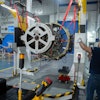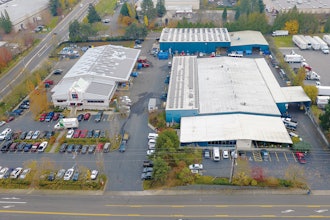A deadbeat employee can be disastrous for any manufacturing organization. Employees that repeatedly show up late, don’t follow company procedures and spend time on non-work related tasks, can be deadweight to your organization.
We recently spoke with Ryan Duguid, senior vice president of technolgy strategy at Nintex, about how manufacturing organizations can use machine learning to provide deep analyses of employee productivity.
IMPO: ‘Deadbeat’ employees are an issue for any company, but specifically in manufacturing, how big of a problem/how costly can they be to an employer?
Ryan Duguid: Low performers are an issue for organizations around the world, with the potential to bring down productivity, impact morale, and reduce customer satisfaction. When it comes to manufacturing and engineering, matters are made worse as product consistency, quality, and reliability often suffers, having a direct impact on overall profitability.
IMPO: How did using machine learning to analyze employee productivity come about? How effective is it right now?
Duguid: At Nintex, we’ve spent years building an Intelligent Process Automation platform to help our customers achieve maximum efficiency by automating processes from the simplest to most sophisticated. As part of our platform, we provide Nintex Hawkeye, an analytics capability that provides deep insights in to the effectiveness of the processes we run, and an understanding of the activity employees carry out each step of the way. With those insights, and the ability for business users to make rapid changes to the processes they are responsible for, it’s easy to focus on troubleshooting and continuous improvement.
While it’s always been possible to use this kind of data to understand how people are performing against expectations or service level agreements, it’s been hard to analyze that data at scale to look for common patterns of behavior and identify issues that at first glance may seem unrelated. With enough time and money, you could probably figure out what’s going on, but in all likelihood, it would be too little, too late. With the advances in big data analytics, and machine learning, it’s now possible to sift through massive volumes of data, identify issues or opportunities, and make decisions to address them in real or near real time.
Applying this technology to process automation is just starting to take off, but the results look very promising.
IMPO: Once such ‘deadbeat’ employee(s) are identified, what would you suggest as the next steps for those manufacturing employers?
Duguid: Identifying low performers, understanding their challenges, and putting a plan in place to help them up their game is key to creating a competitive culture and building trust in the workforce. It’s also important to look at those in leadership positions and understand the role they have to play in the effectiveness of the people under their watch.
At the same time, identifying low performers has limited upside, and it’s even more important to identify those that are meeting or exceed expectations and understand what can be done to take them to the next level. Thankfully, the same technology can help on both fronts.
IMPO: What is the future looking like for this technology for employee productivity tracking / productivity improvements in manufacturing?
Duguid: Historically, organizations have focused on driving improvements across a handful of high impact processes at the expense of hundreds or thousands of manual processes that occur every day. These processes are like the oil in your engine… without it, things stop quickly, and if you don’t change it and keep it fresh, things wear down and become far less effective. So why have these processes been left alone for so long? Mostly because the cost of the software was very high, and you typically needed an army of consultants and developers to get anything done. At Nintex, we’ve focused on building a no-code platform that can be used by people without a background in programming. That means you put the power in the hands of the people who know your business best, and can start to operate everything from the simplest to the most sophisticated. We’ve also made it easy for those people to apply advanced technology to gain a deeper understanding of the inner workings of their business.
The results for manufacturing? Increased employee effectiveness and retention, better product quality, faster pace of innovation, adherence to standards and regulations, happier customers, and more profit.























